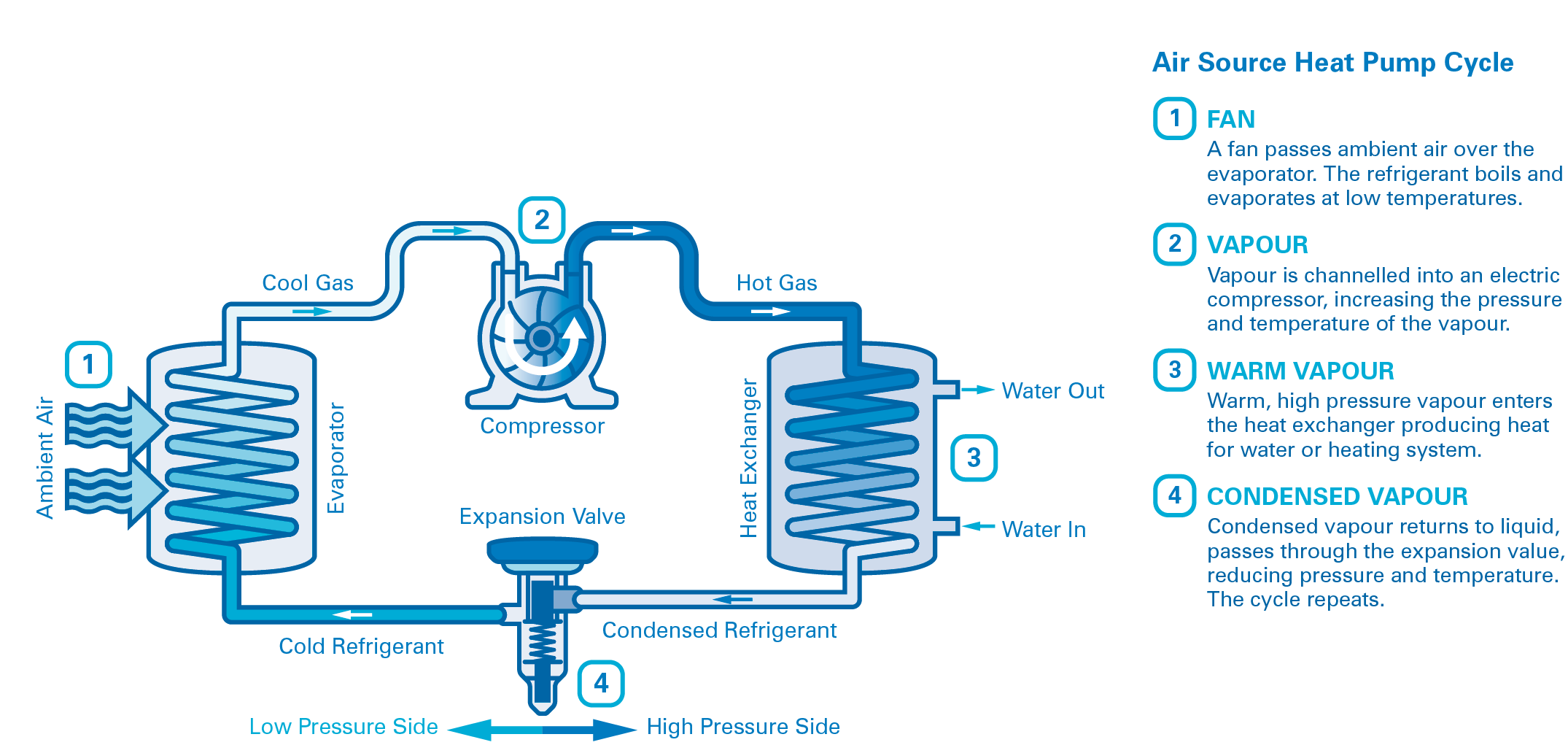There are two main types of air source heat pumps air-to-water and air-to-heat.
An ASHP operates like a refrigerator in reverse and consists of an evaporator, a compressor and a condenser. ASHP’s absorbs heat from the outside air into a thermal transfer liquid at a low temperature and then the heat pump compressor increases the temperature of that heat. In the condenser, the heated liquid’s energy is transferred to the buildings heating and hot-water system.
Air-to-Air heat pumps typically will blow warmed air into a building envelope to provide space heating and cannot heat hot water. In the summer, an air-to-air ASHP can operate in reverse to provide cool air for your home.
Air-to-water heat pumps supply wet central heating systems with thermal energy and cannot be operated in reverse like air-to-air. The heat produced by air-to-water heat pumps are cooler than that from a conventional boiler so larger radiators or underfloor heating matrix are often required the produce effective space heating.
For heat pumps to work at their best and provide the best operational savings a well-insulated building is essential. Air-to-water heat pumps are often be best suited to new-build properties where the central heating system can be optimised for use with the lower temperature thermal source than compared to conventional boilers.
ASHP’s look similar to air-conditioning units and are less disruptive to install than ground source heat pumps, as they do not require any bore holes or trench digging in the grounds surrounding a property. They are also cheaper than ground source heat pumps. The Energy Saving Trust (EST) estimates that the cost of installing a typical ASHP system ranges between £9,000 and £11,000.
Air source heat pumps require little maintenance and can provide heating and hot water, but need enough space outside the property for the external condenser unit. Whilst they are easier to install then ground source heat pumps the condenser units can be noisy and also blow out colder air to the immediate environment. The also typically require planning permission due to the audible noise created by the condenser unit.






